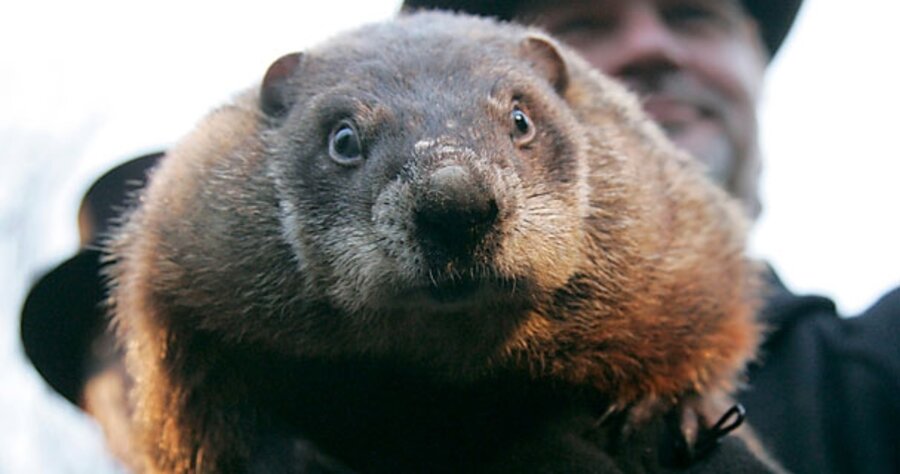Is Punxsutawney Phil responding to global warming?
Loading...
As dawn broke on Monday morning, officials in cities and towns across the United States and Canada, engaged in an annual ritual of attempting to predict the weather by harassing a marmot.
According to the website of the Punxsutawney (Pa.) Groundhog Club, the most famous of these marmots, Punxsutawney Phil, emerged from his burrow (or more accurately, was dragged out of a box), surveyed the 13,000-person crowd that had gathered to see him, and uttered something in the obscure language of Groundhogese to Club President Bill Cooper, who then proclaimed that the large rodent had seen his shadow and we would therefore be getting six more weeks of winter.
This isn't particularly surprising. Since 1886, when the tradition first began in the western Pennsylvania borough, Phil has presaged an early spring only 14 times.
But – as another signal of our warming climate – nine of those times have occurred since 1975.
Phil may be right in the broad outlines – it has been getting warmer lately, particularly since the 70s – but his year-by-year prediction skills could use some improvement. Investigative reporters at the Atlanta Journal-Constitution compared Phil's pronouncements since 1994 to data from the National Weather Service. The verdict: For the past 15 years, Phil has had an accuracy rate of 50 percent, no better than a coin toss.
Of course, Phil isn't the only weather-prognosticating groundhog in North America, and not all of them are in agreement. Atlanta's Gen. Beauregard Lee, whom the Journal-Constitution says has only a 31 percent accuracy rate, predicted an early spring. So did Staten Island Chuck, who took the opportunity this year to bite New York Mayor Michael Bloomberg, drawing blood.
Other groundhogs predicting an early spring include New York state's Dunkirk Dave and Malverne Mel.
Joining Phil in predicting a longer winter are Woodstock Willie of Woodstock, Illinois, Jimmy the Groundhog of Sun Prarie, Wisc., and Sir Walter Wally of Raleigh, North Carolina. Similar predictions occurred north of the border, with Manitoba Merv Ontario's Wiarton Willie each seeing their shadow.
Six more weeks of cool temperatures would not be terribly surprising, given that this past year has been cooler than previous years this decade, mostly because of the La Niña that developed in the Pacific Ocean. The meteorology site Weather Underground, notes predictions (by human weather forecasters) that February will see colder than average temperatures in the Pacific Northwest, and near-average temperatures to the Midwest and Northeast.
NASA meanwhile, predicts that the globe will set a new high-temperature record sometime in the next year or two.





